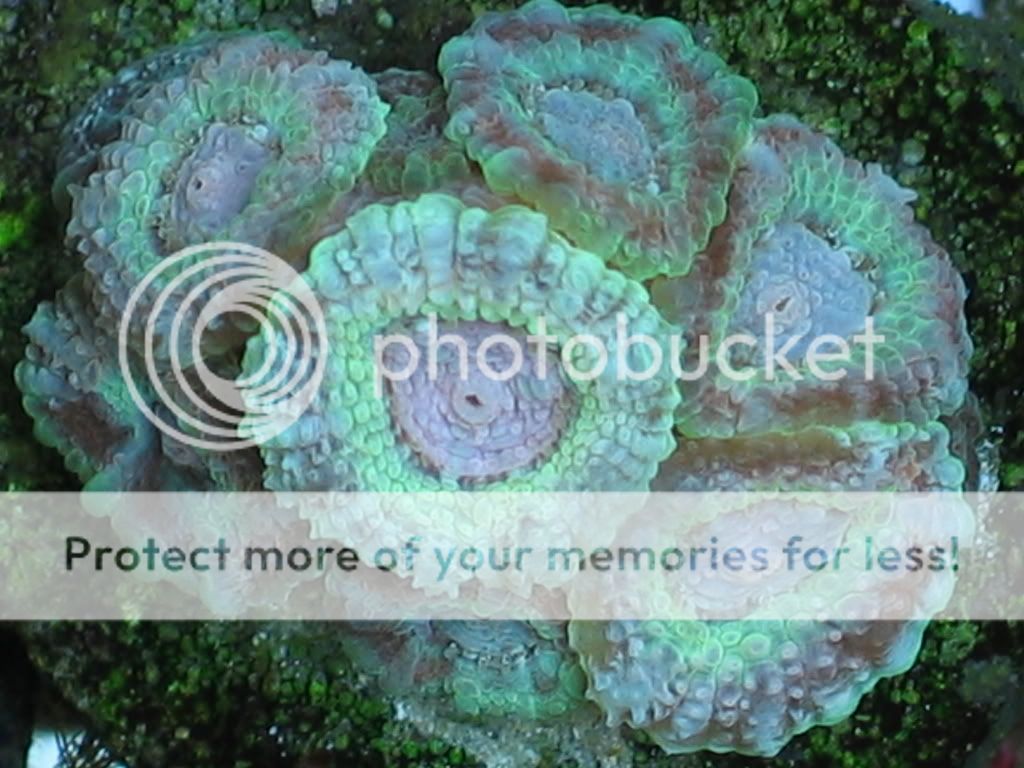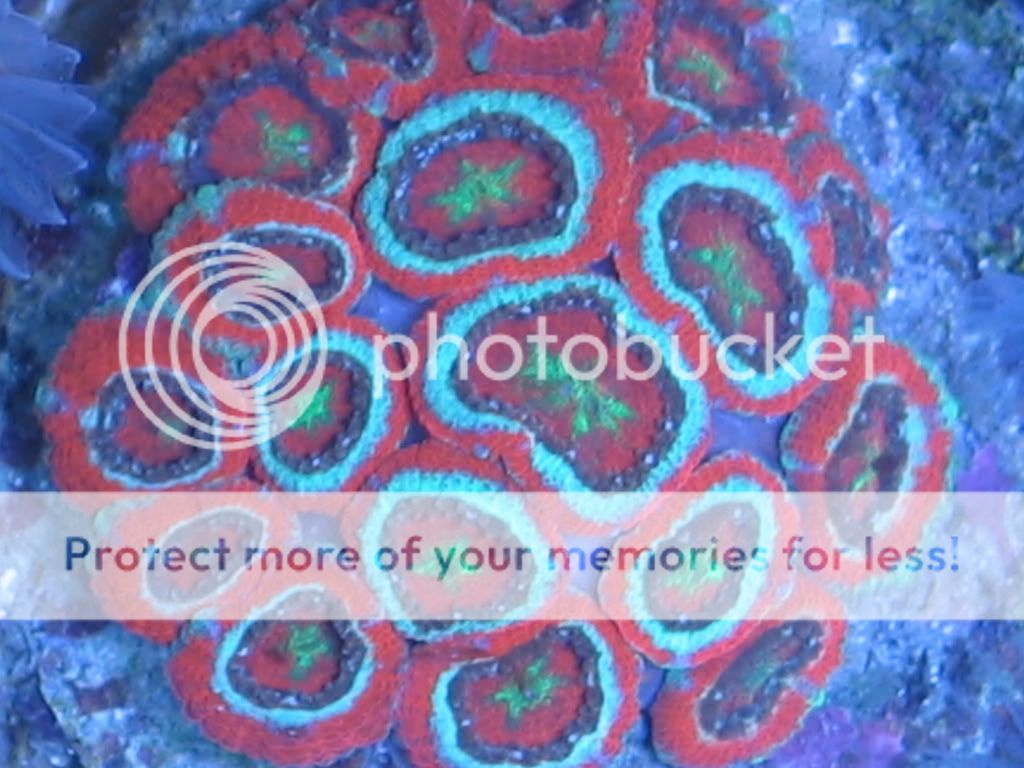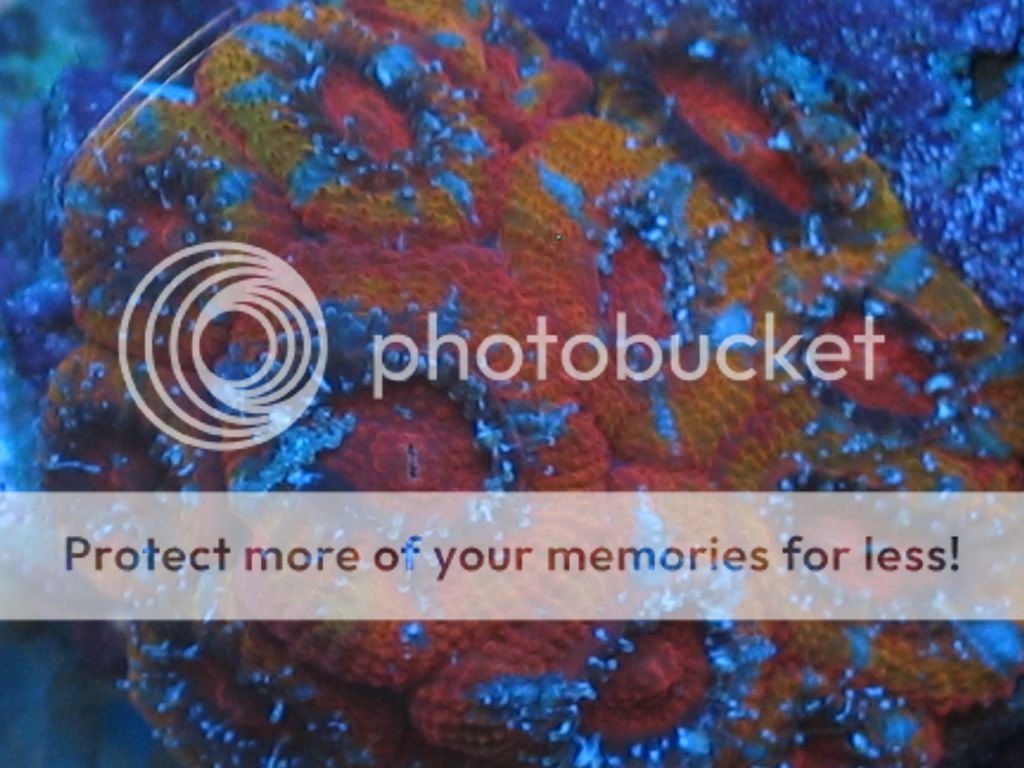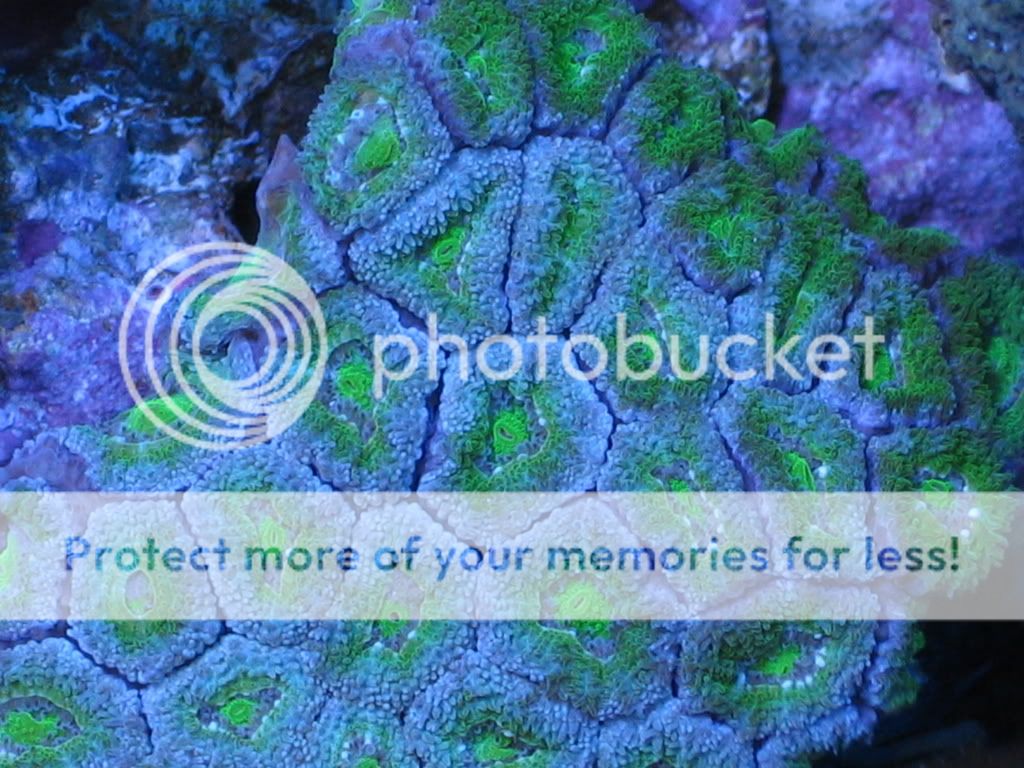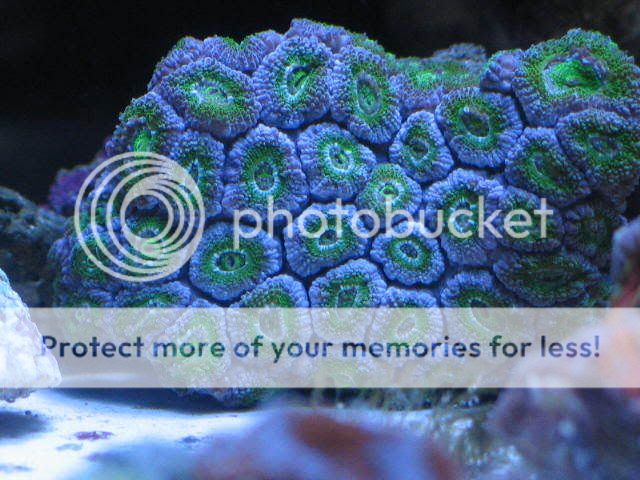Sold as Micromussa from store, just got it from a friend.
There are a few bare corallites in the back from dead polyps, when I try to measure they are all about 8mm when I measure across the longest side (since they are slightly oval).
Trying to figure out if it is a Micromussa or an Acanthastrea lordhowensis. Difficult since the Mircomussa has <8mm corallites and Acanthasrea more than 8mm.
Any other ways to determine which species it is? Anyone that can determine from just a photo?

There are a few bare corallites in the back from dead polyps, when I try to measure they are all about 8mm when I measure across the longest side (since they are slightly oval).
Trying to figure out if it is a Micromussa or an Acanthastrea lordhowensis. Difficult since the Mircomussa has <8mm corallites and Acanthasrea more than 8mm.
Any other ways to determine which species it is? Anyone that can determine from just a photo?








